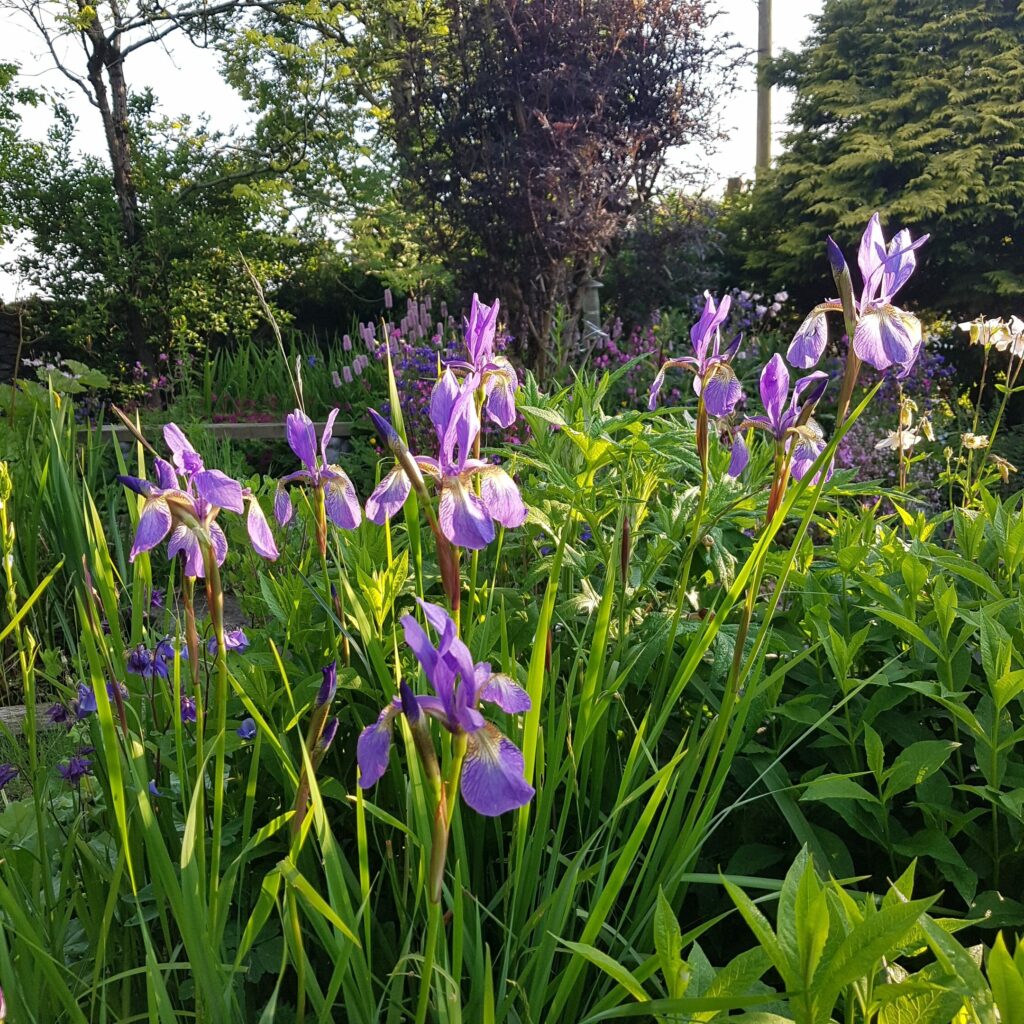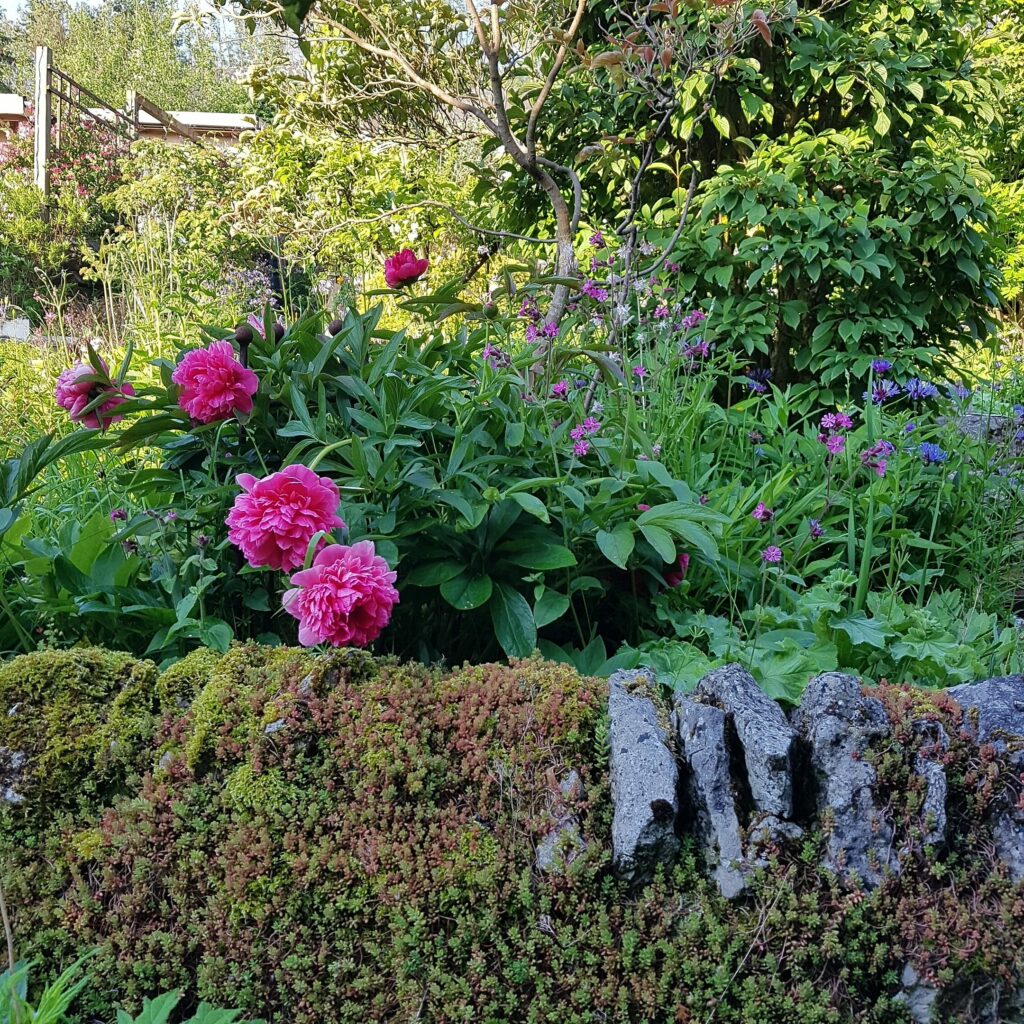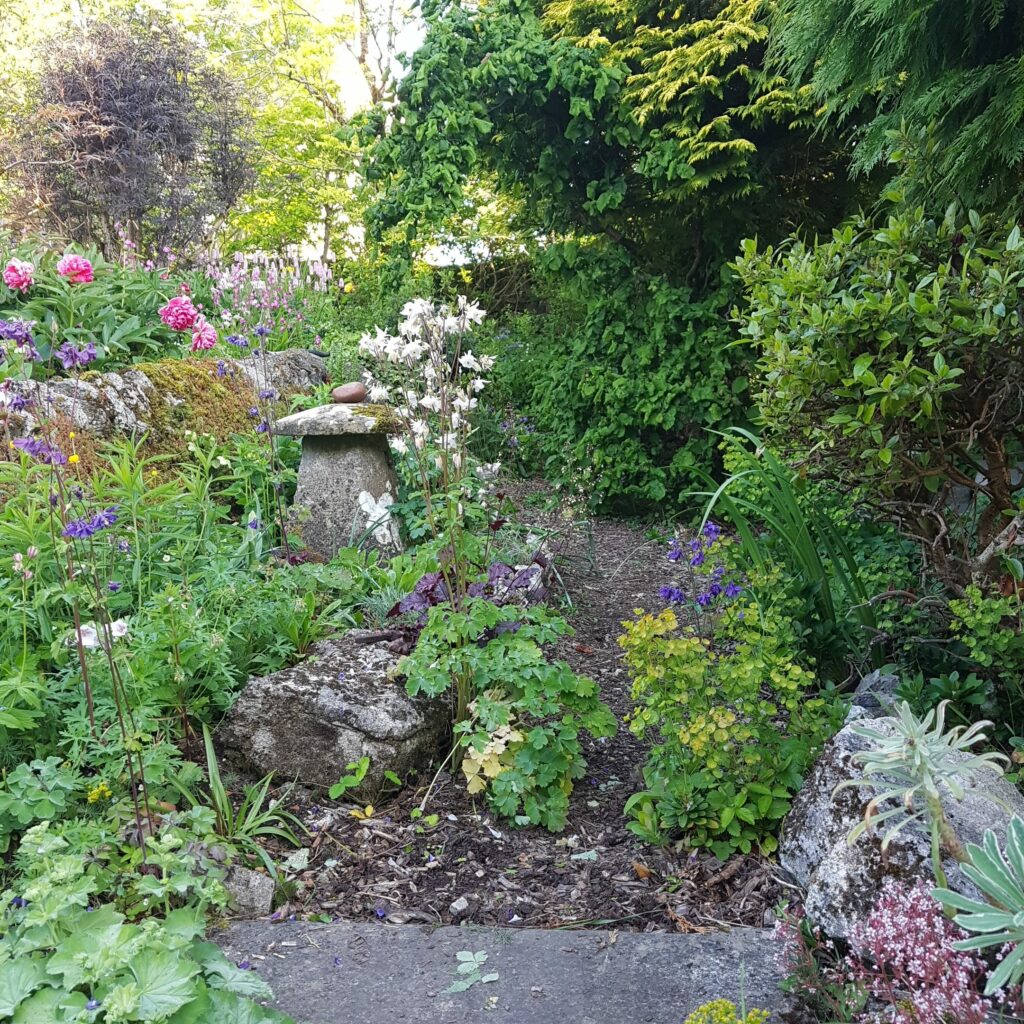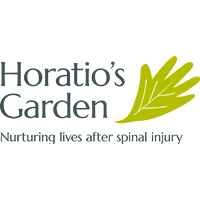Cancer put gardening on my bucket list
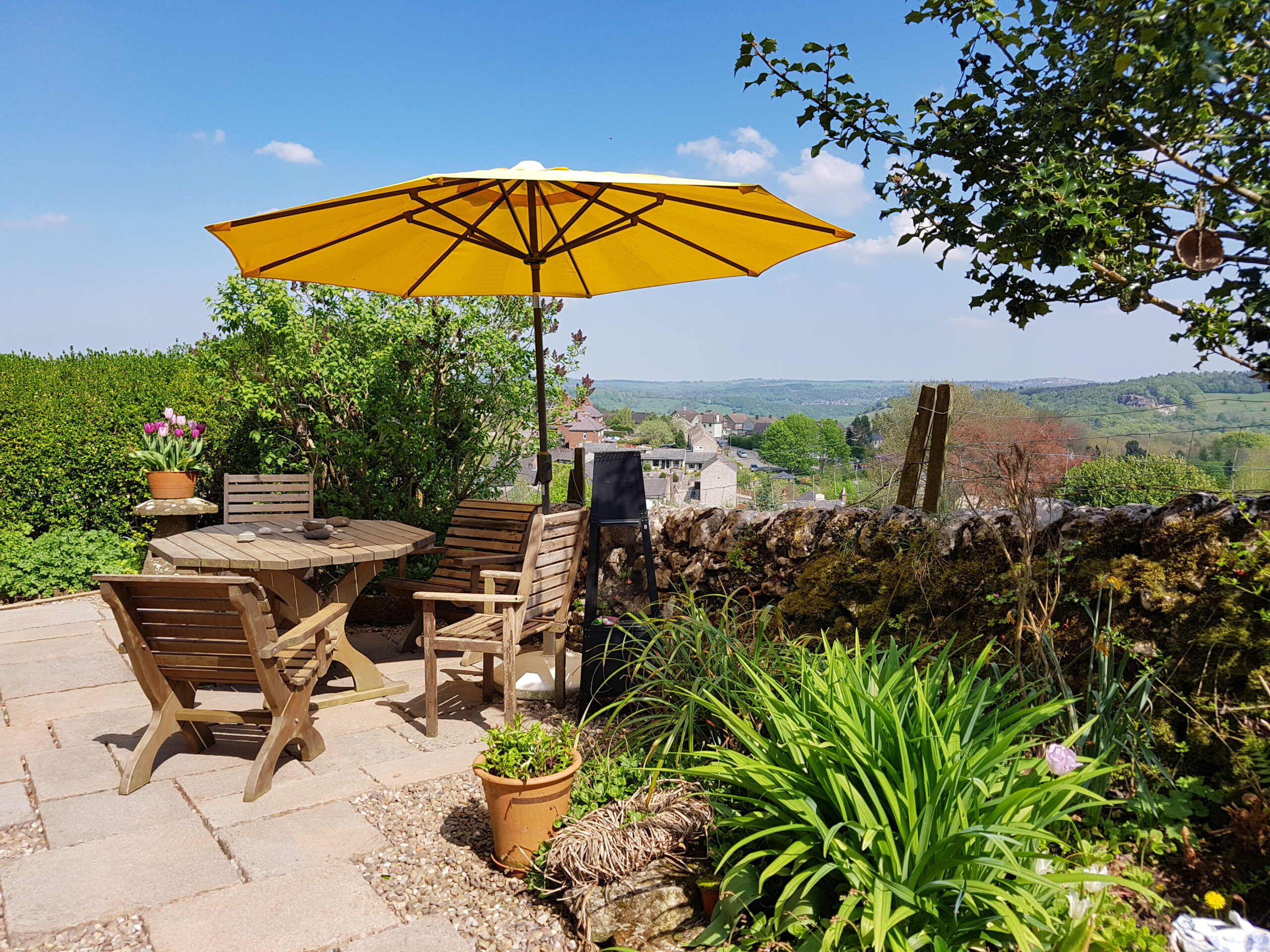
For Hildegard Wiesehofer gardens have always been a place of calm and an antidote to the chaos of a busy life. In 2000, she took on a derelict cottage and garden and began to transform it into her own beautiful garden. But in 2011 a devastating cancer diagnosis, that might have put paid to her plans, galvanised her into finishing the final part of the garden for her non-gardening husband. This is her story …
My love affair with the National Garden Scheme started in the 1990s but was limited for many years to visiting gardens. Escaping to these beautiful calming spaces was my antidote to a rather hectic life as a single mum working full time in a job that involved quite a lot of travel.
The dream of owning my own beautiful garden came closer to reality in 2000, when we moved to a derelict cottage in Derbyshire. It had been a nursery in a previous life, but all that remained were broken greenhouses, lots of concrete paths and rubbish of every description.
We developed the garden slowly over the next 10 years, dispatching many skips full of concrete and importing endless quantities of soil and compost. I learnt that gardening at an exposed height of over 1000 feet provides considerable challenges, but the views reward us every single day.
In early 2011 I was diagnosed with GIST (gastro-intestinal stromal tumours), a rare form of cancer for which there was no known cure and that would not respond to chemo or radiotherapy. According to the consultant who conveyed the bad news: “A devastating diagnosis, but science progresses as we speak”. I clung on to that sentence again and again.
I was fortunate to be invited to take part in a one-year trial that was funded by the newly set-up Kings Fund in connection with Cancer Research. The side effects were rather unpleasant, but each fearfully anticipated scan result gave new hope that the medication was effective. The trial was extended by a further year and then a third.
People often speak about a ‘bucket list’ of things to do and places to see. The main item on mine was to modify the garden in such a way that my non-gardening husband could manage it after my death, and to turn the one last remaining overgrown area into a peaceful space.
In between what seemed endless visits to hospitals, scans, and waiting for results, I spent hours in all weathers digging out pernicious weeds, sieving soil to remove the rampant bindweed roots, fighting my way through dogwood, and using the huge pile of stones I unearthed to form a rockface for a water feature. The project grounded me and created both a focus and a distraction from the frightening thoughts and the unpleasant side effects of the medication.
I wanted the design to reflect our hillside location in Water Lane and to incorporate the sound of our natural spring. Unlike the remainder of my garden, which tends to be soft, colourful, and slightly chaotic, the design of this garden was heavily influenced by the Japanese principle of simplicity and ‘borrowing the landscape’. As a result, it has very little colour, a very limited range of plants and encourages an appreciation of the extensive views over the surrounding countryside.
At the end of the second trial year the garden was finished. I was feeling well and thought it was time to throw a party to celebrate that I was still alive and to raise money for Macmillan Cancer Support. It was at this opening party that someone suggested I open the garden for the National Garden Scheme. We were accepted for our first opening in 2014 and we have been able to open every year (even throughout Covid, thanks to the systems that the National Garden Scheme put in place to ensure visitor safety) as a thank you and a celebration of life.
Opening the garden and raising funds for charity is a bit stressful. Of course, it is. But it is also an amazingly rewarding experience. The fact that there is a date on which the garden needs to be ready is hugely motivating as is the knowledge that after that date I can just sit back and enjoy the garden. We find it immensely rewarding to share our beautiful, tranquil location, to connect with other gardeners and to learn from each other by sharing our do’s and don’ts. My husband has even discovered a talent for baking!
Reluctantly, we decided not to open our garden this year (2024), partly because we want to develop and change some areas and partly because since taking on the role as county organiser for Derbyshire in 2022 I don’t quite have the same amount of time available as I would like. But we look forward to opening again in 2025.
This story was originally published in the 2024 Little Yellow Book of Gardens and Health





